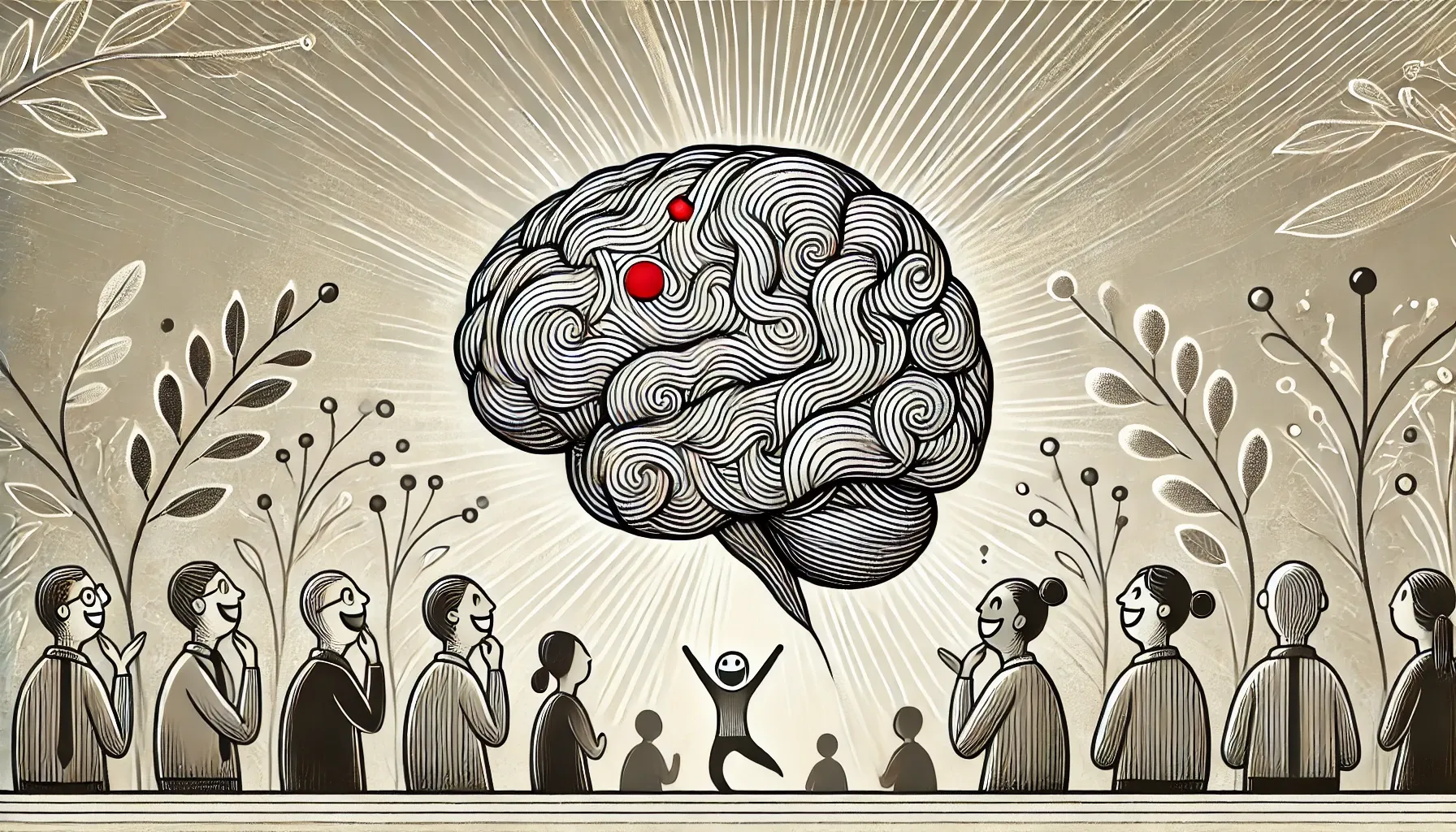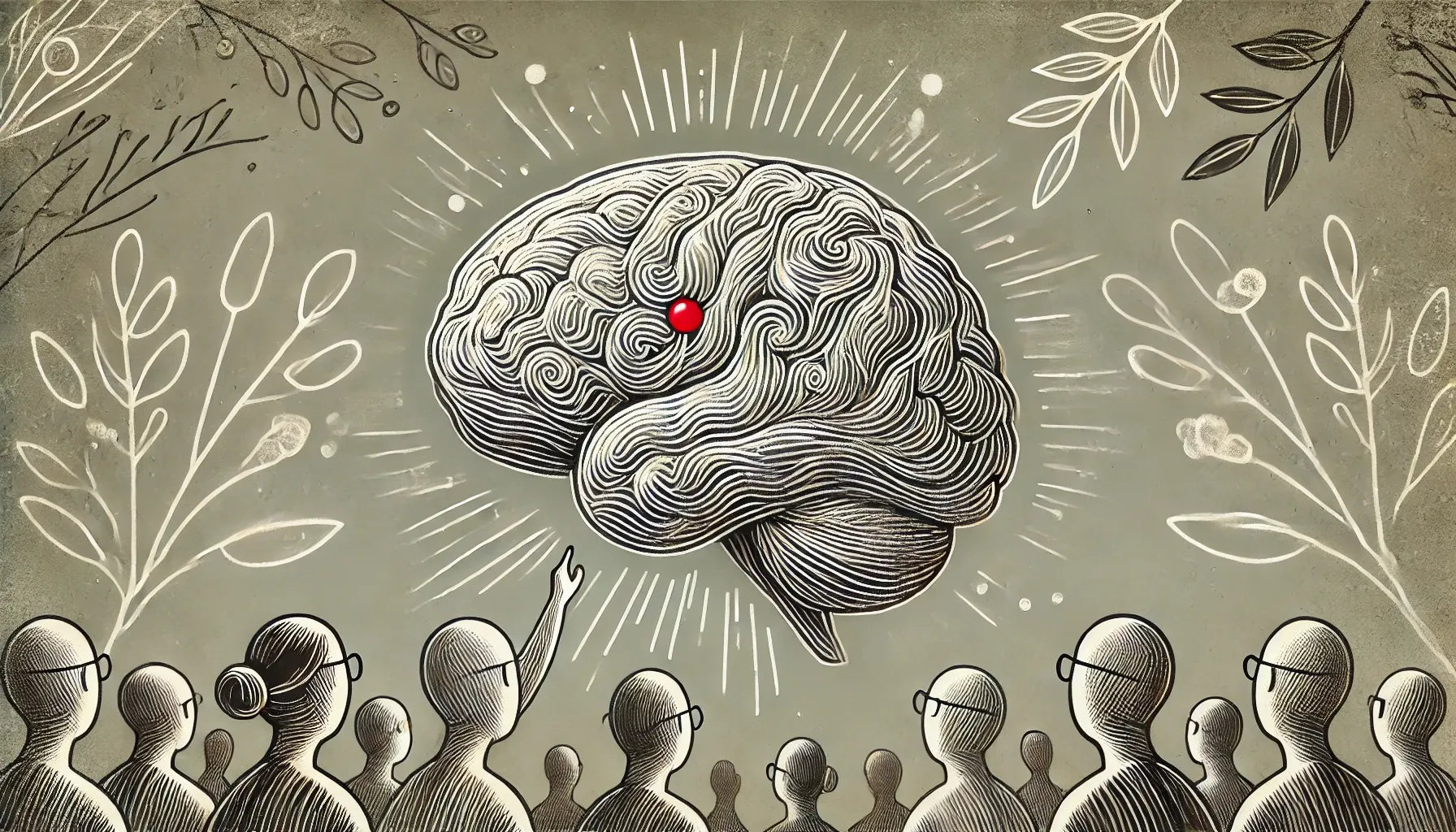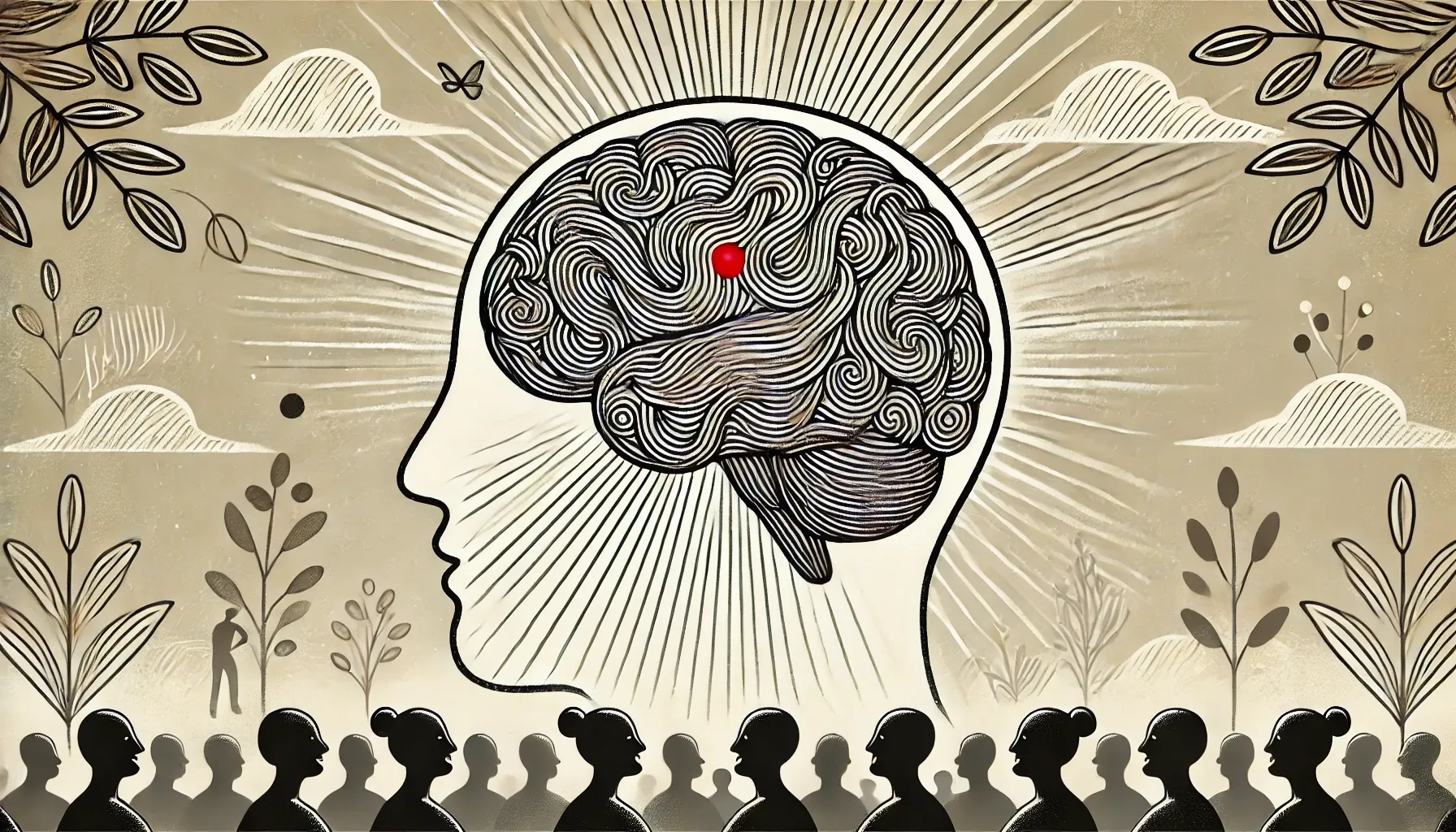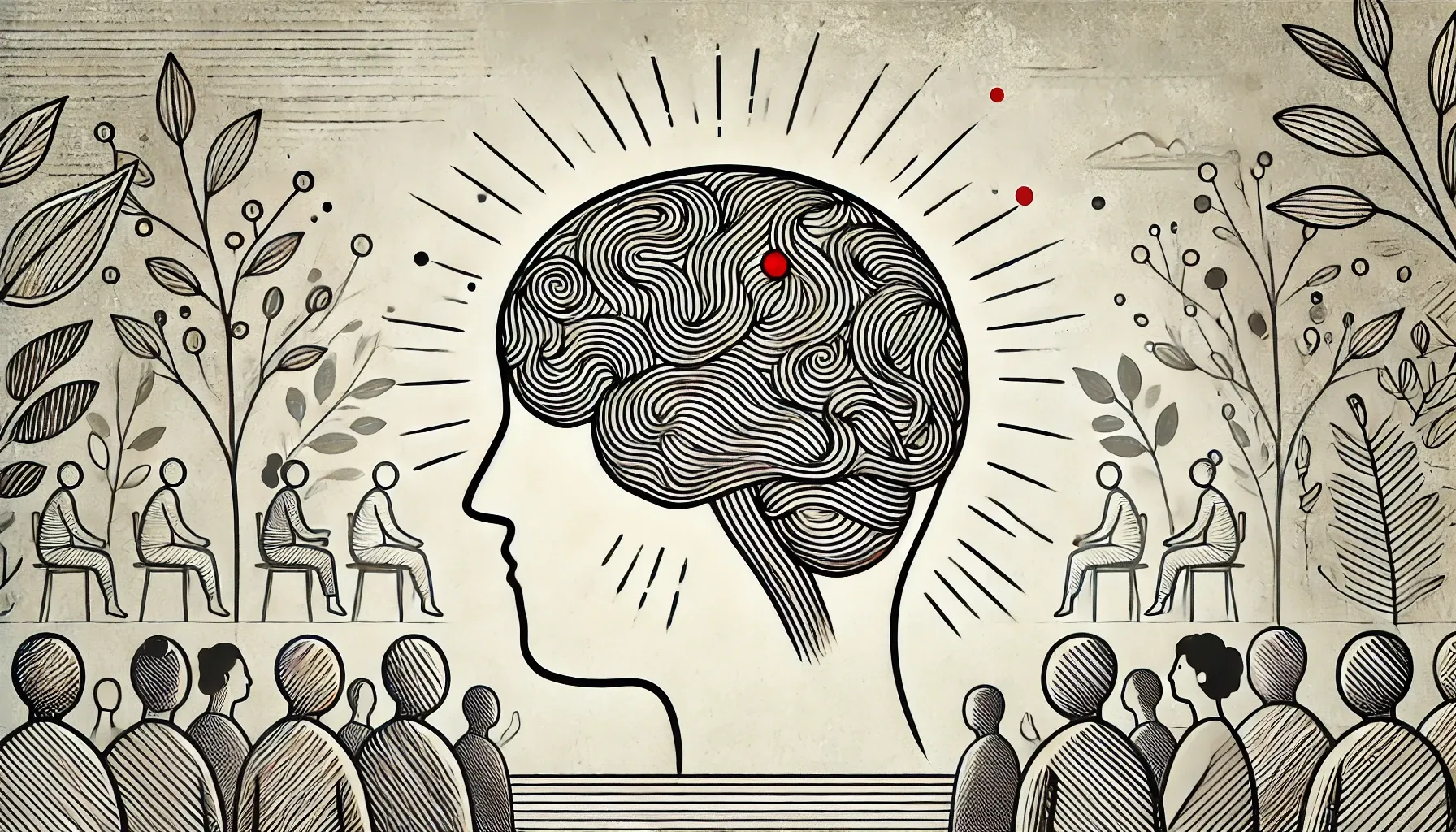Introduction
At Pigtail Pundits, for many years, I used to share a pet theory that I had about how the brain works, with my colleagues.
The idea was to get them thinking about better ways to solve problems the right way and not to get caught in what I call “lazy thinking”.
Lazy thinking, is that which most of us default to. It’s because the human mind likes to conserve energies. It is what happens, far too often for comfort, at work.
Recently, I had the benefit of testing my pet theory using Perplexity.ai.
Remarkably, the AI chatbot validated this and told me that it was the right way.
Of course, it added a bunch of support to the theory from psychology and used some very scientific terms to describe the process.
I’m happy to share this theory with you too, and show you how it helps us with understanding and using AI.
How do we think
You encounter a problem that you need to solve
- You input information on it
> Feed your brain with lots of information on the topic/subject/ product…
> This input comes from what we call the Research & Discovery Phase. - You let the collected information simmer
> Incubate it
> Let ideas and patterns, connect and flow to the top - You collate the information
> Organize solution hypotheses logically, meaningfully
> Discard ideas that you think are not useful/ relevant solutions - You pilot the solution
> Test the solution
> Use the feedback to refine it and iterate all over again
> You repeat till you get the most enhanced solution - You then scale
> Just what works, not the mistakes
Thinking is hard work…

Despite that, most of us are capable of good thinking.
Nope, it isn’t taught at our schools, or colleges, or even at work.
On the contrary, at work, it’s often demanded.
How many times have you heard comments like these:
- “This is the most facile explanation that I have heard”
- “I want you to improve this presentation by 10X”
- “I want you to make this packaging here, by famous Brand X, look like a piece of crap.”
All this makes you wonder how to get better at thinking. The trouble is no one explains why something is facile, or how to improve something by 10X, or how to make somebody else’s great packaging look like crap.
You’re left to your own devices to figure this out.
Thinking is difficult to articulate, no doubt. And even the best falter at it.
The truth is that some of us are just too lazy to indulge in thinking. Yet others are driven to it because of no other choice. Some of it is for effects – to goad you to do better, think harder.
Thinking techniques come to your rescue

The fact remains that there is a better way to think. After all, it’s a skill that can be learned.
The trick is to use thinking techniques and master them to make problem solving easier, faster, better.
Before the internet, we used books for this: De Bono being the most renowned.
I must confess, that it is dry reading, understanding, finding opportunities to put it to practice and making it part of your myelin.
Too much work, right?
Once the internet gained momentum, you could snag ideas from a zillion places: books, articles, searches, PDFs, videos… so this became the norm. At least for some folks.
The process to improve thinking now transformed into
- Searching for better thinking methods and techniques bit by bit
[articles were a tad easier than books] - Practicing the methods
[if and when one could]
That was work too.
The lazy human mind often comes in the way of better thinking, even for the best of us.
After all, you have limited time for it.
The campaign needs to get out tomorrow.
Blog ideas are needed yesterday.
Major decisions are already late.
20 things vie for your immediate attention.
Distraction is often a good and a reasonable excuse for poor thinking.
The upshot is that we don’t learn the thinking methods, or practice it often enough.
Or the moment we learn 2 or 3 techniques, we stop.
We also rationalize: What’s the use of learning 20 when you need to practice all of them for it to be any use?
That was even more work.
This brings us to the question: How has AI resolved this “more work” for us?
Your Recipe For Thinking With AI

Here’s how:
Step 1: Use AI for research and discovery
You can do it for anything including audience research, branding, content, ideas, facts, stats, pains, problems, frustrations, gains, goals, etc.
Perplexity, or ChatGPT makes this even simpler. Deep dive into the topic with questions.
Example Prompts: These are simple, low in context, but will get you started on the journey. We shall get to the more elaborate AI Recipes for other subjects on Phewture.
- Identify the top 5 pain points for millennial parents when shopping for baby products online.
Let’s see what happens when we try this prompt in ChatGPT.

- Generate 10 unique content ideas for a sustainable fashion brand targeting Gen Z consumers.
- Analyze social media conversations to uncover emerging food trends among health-conscious consumers in urban areas.
- Create a customer persona for a luxury travel company, including demographics, psychographics, and key motivations.
- List 20 creative ways a local coffee shop could use TikTok to increase brand awareness and foot traffic.
- Identify gaps in the market for eco-friendly home cleaning products based on current offerings and consumer demands.
- Generate 5 potential brand names for a new line of plant-based protein snacks aimed at athletes.
- Analyze customer reviews of the top 3 fitness tracking apps to identify common complaints and desired features.
- Outline a content strategy for a B2B software company looking to establish thought leadership in AI and machine learning.
- Identify untapped opportunities for a pet care brand to expand its product line based on current market trends and consumer needs.
Let’s input the last prompt into Perplexity Pro, running Claude and check the answer.

<end of answer>
Step 2: Use AI to simmer and surface ideas worth pursuing instantly
Why meditate on your navel when you are short of time?
Let AI do all the work of an intern. Prompts, and a prompt framework, will help here.
We have more advanced prompts with a deeper context that use a framework in Phewture.
Step 3: Use known models on a subject/ topic to expand and structure ideas
Yes, this requires you to know models.
But that’s actually as easy as finding and selecting it from Google Images with the right keyword.
Search for Model|Template|Framework <keyword>
Apply the steps from the model to expand and focus your answer.
Step 4: Garnish the ideas in Step 3
Choose a creative thinking model that you like and apply it to the results in Step 3.
For example: Apply 6 Thinking Hats Model to your answer from Step 3.
Step 6: Pick and choose a handful of ideas
From all the ideas you generate from Step 4, either for presenting, or moving forward.
Step 7: Test, rinse and repeat
For any problem, any thinking model.
Caveats
Of course, you would need to vet all the outputs by AI Tools and check if they are worth pursuing. But you’d agree, that’s a lighter task than thinking from scratch.
By leveraging AI to enhance each stage of the thinking process – input, incubation, retrieval, and evaluation – you and I, can solve problems more creatively and effectively.
The key is to use AI as a tool to augment human intelligence and put it on steroids.
If you think that all this wonderful… wait
So what’s the recipe for better thinking with AI?
I have showed you one method above.
Or was it a 100 that you could extend it to?
Can you now use the Recipe I have given and use it to get more creative with your problem solving? Why not?
Yes, and that’s regardless of the industry you work in, or the problem you are trying to solve.
Let’s say, I give you the precise prompt that you can modify in bits and run with.
Yes, with this you will be able to craft ideas that will make you a fountain of creativity!
Yes, you will be able to do it on-demand and flow like the springs of Eden.
Well, if you’re curious, find out how you can enable all this and more, by joining Phewture: AI Mantras for Your Business.
Catch you on the other side.
AI Tools that you can use
The prompts on Phewture are AI tool agnostic.
They should work on GeminiPro, ChatGPT, Claude and Perplexity. Even on free tools such as llama3 by Meta which you can install on your desktop.
- ChatGPT and Gemini Pro can read Google Files by way of attachment
- Claude can read PDFs.
- Perplexity can read text files and PDFs.
Use these capabilities to upload your prompts and get the best out of these tools.
You will have to use the following prompt, if you follow the file upload method: Please complete the tasks outlined in the attached document.
Next Steps
- To help you find your way around Phewture, I have put together a set of articles under Wayfinding. Do go through these and you’ll navigate like a pro through this stream of consciousness. 😄
- The Learning Methods are exercises that I’d recommend if you wish to wrap your head around the possibilities of AI at work, or play.
- Don’t forget to leave your comments below and share your joy with your friends on social media. Use the share icons below this post to gain some good karma.
Wish to train your in-house team on AI techniques?

Phewture offers AI-spurred training for teams. Do check out the Training Services.
While you enjoy your sojourns here, I’d love to have your feedback. Use the comment box below and let it rip.

